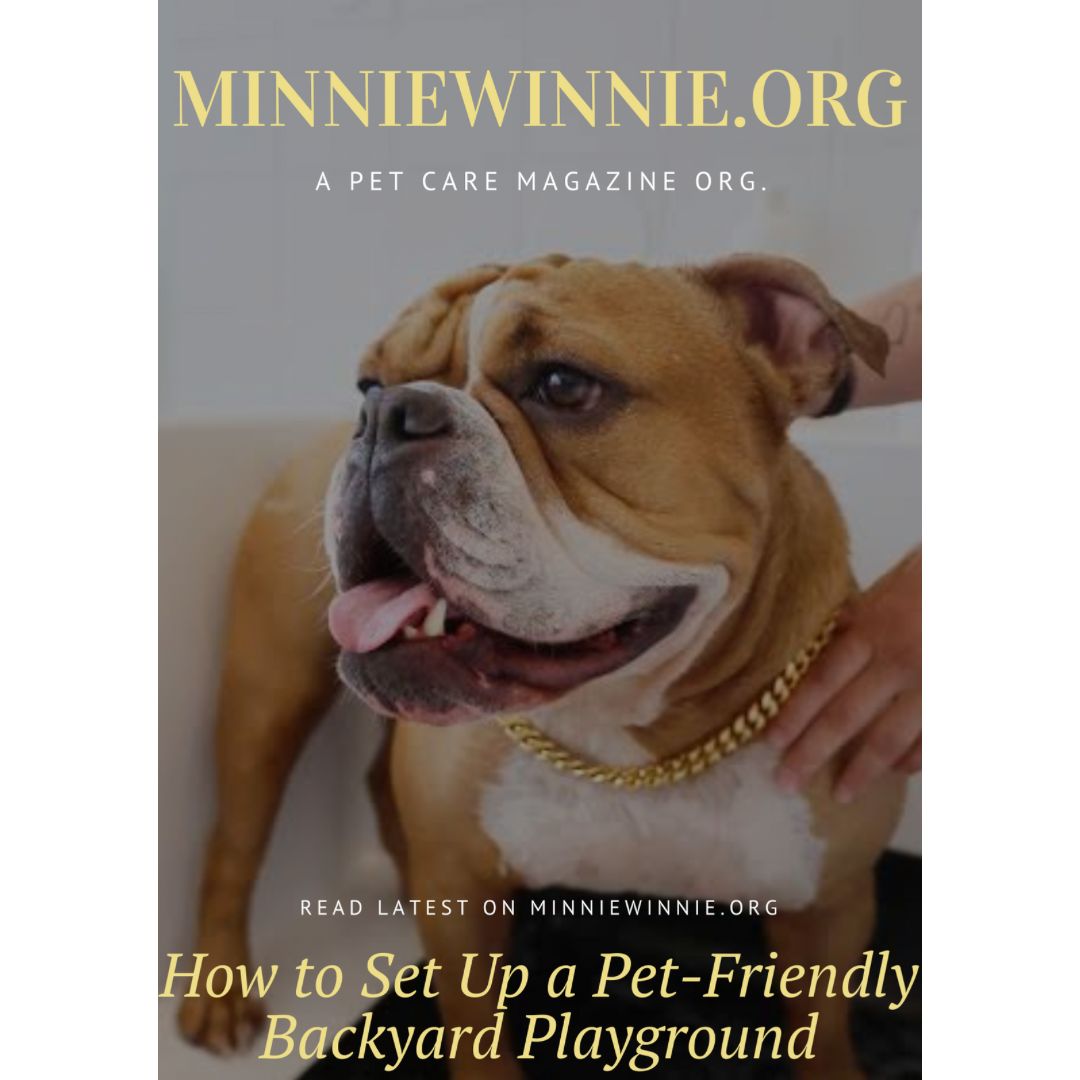How to Set Up a Pet-Friendly Backyard Playground
Creating a pet-friendly backyard playground is a fantastic way to ensure your furry friends have a safe, stimulating, and fun environment to explore and enjoy. Whether you have a dog, a cat, or both, designing an outdoor space that caters to their needs can enhance their well-being, provide mental and physical exercise, and strengthen your bond with them. Here’s how to set up a backyard playground that your pets will love.
1. Assess Your Space
Before you start designing your pet-friendly playground, assess the available space in your backyard. Consider the size of your yard and the needs of your pets. Larger breeds of dogs, for example, will require more room to run and play than smaller breeds or cats. Observe how your pets use the space—do they enjoy digging, climbing, or simply lounging? This will help you tailor the playground to their preferences.
2. Safety First
Safety should be your top priority when setting up a backyard playground for your pets. Take the following precautions:
- Secure Fencing: Ensure your yard is enclosed with sturdy fencing to prevent your pets from wandering off. The fence should be high enough to keep larger dogs from jumping over and secure enough to keep small pets from squeezing through gaps.
- Non-toxic Plants: Many common garden plants are toxic to pets, including azaleas, lilies, and certain types of ferns. Replace any toxic plants with pet-safe alternatives like marigolds, sunflowers, or lavender.
- Shade and Water: Provide plenty of shade and access to fresh water to keep your pets cool, especially during hot weather. A shaded area under a tree, an awning, or a doghouse can offer a cool retreat.
3. Create Zones for Different Activities
Design your playground with different zones to cater to various activities. This will keep your pets engaged and entertained while promoting healthy exercise.
- Play Zone: Set up an area with pet-friendly toys like balls, frisbees, and tug ropes. For dogs, consider adding an agility course with tunnels, ramps, and hurdles. Cats might enjoy a smaller area with a scratching post, interactive toys, and climbing structures.
- Digging Zone: If your dog loves to dig, create a designated digging area by filling a sandbox with sand or loose soil. Bury toys or treats to encourage them to dig in that specific spot, rather than your garden beds.
- Relaxation Zone: Provide a comfortable space where your pets can rest after playtime. Soft outdoor pet beds, cushioned mats, or hammocks can create a cozy spot for lounging. Make sure this area is shaded to protect them from the sun.
4. Incorporate Natural Elements
Pets often enjoy interacting with natural elements, so consider incorporating features like:
- Grass and Plants: Maintain a healthy lawn for your pets to run and roll on. Grass provides a soft, cool surface that’s gentle on paws. You can also create pathways lined with pet-safe plants to stimulate their senses.
- Water Features: Dogs, in particular, love water play. A shallow pond, a splash pad, or a dog-friendly water fountain can provide endless entertainment and help them cool down on hot days. Make sure any water feature is shallow enough to prevent accidents.
- Rocks and Logs: Place large, smooth rocks or wooden logs in your yard for your pets to climb, jump on, or explore. These elements can add variety to the terrain and make the playground more interesting.
5. Add Pet-Friendly Surfaces
The surfaces in your backyard playground should be comfortable for your pets to walk and play on. Consider using materials like:
- Artificial Turf: This low-maintenance option mimics the look and feel of grass but doesn’t require watering or mowing. It’s also durable and easy to clean.
- Pea Gravel: This smooth, small gravel is gentle on paws and provides excellent drainage. It’s a great option for paths or around play areas.
- Mulch: Opt for pet-safe mulch made from natural materials like cedar or pine. Avoid cocoa mulch, which is toxic to dogs.
6. Install Pet-Safe Boundaries
To protect your garden beds and plants from being trampled or dug up, install pet-safe boundaries. Low fences, raised garden beds, or edging stones can create clear boundaries between your pet’s play area and your garden. This will help prevent unwanted digging or chewing of plants.
7. Interactive and Sensory Elements
Pets thrive on mental stimulation, so incorporate interactive and sensory elements into your backyard playground:
- Puzzle Feeders: Place puzzle feeders or treat-dispensing toys around the yard to encourage your pets to use their brains and noses to find treats.
- Scent Trails: Create a scent trail using natural pet-safe herbs like mint, basil, or catnip. Scatter these herbs along pathways or in specific areas to encourage your pets to follow the scent.
- Wind Chimes or Pet Chimes: Hang wind chimes or pet chimes in the yard to create soothing sounds that can intrigue your pets and add a calming atmosphere.
8. Regular Maintenance
Keep your pet-friendly playground clean and well-maintained to ensure it remains a safe and enjoyable space. Regularly check for any hazards, such as broken toys, sharp objects, or overgrown plants. Clean up waste promptly and replenish water supplies daily.
Conclusion
Setting up a pet-friendly backyard playground requires thoughtful planning, but the rewards are well worth the effort. By creating a safe, engaging, and stimulating environment, you provide your pets with a space where they can thrive, stay active, and enjoy the outdoors. Whether it’s a place for energetic play or quiet relaxation, your backyard can become a haven that meets all your pet’s needs, enhancing their quality of life and deepening your connection with them.










